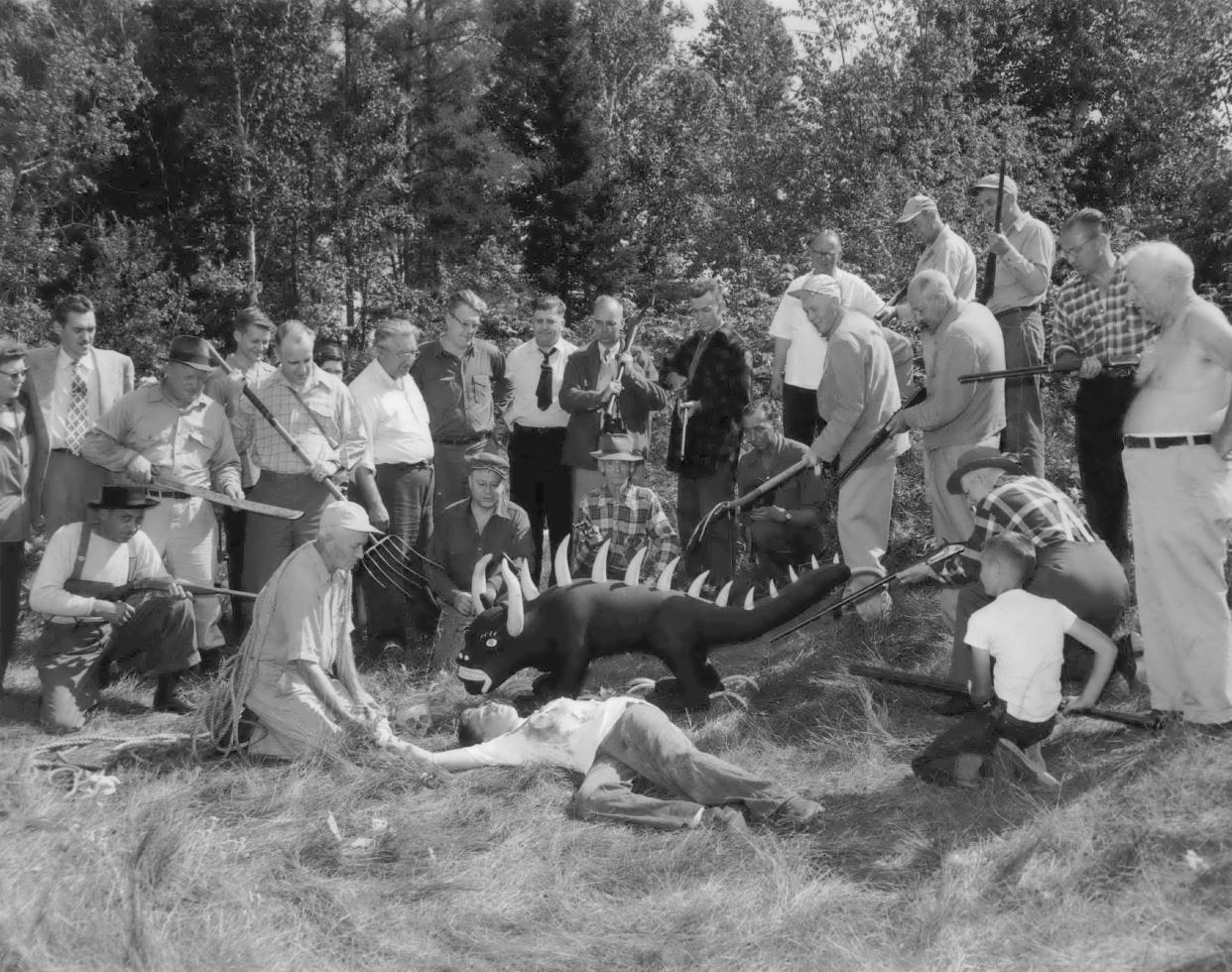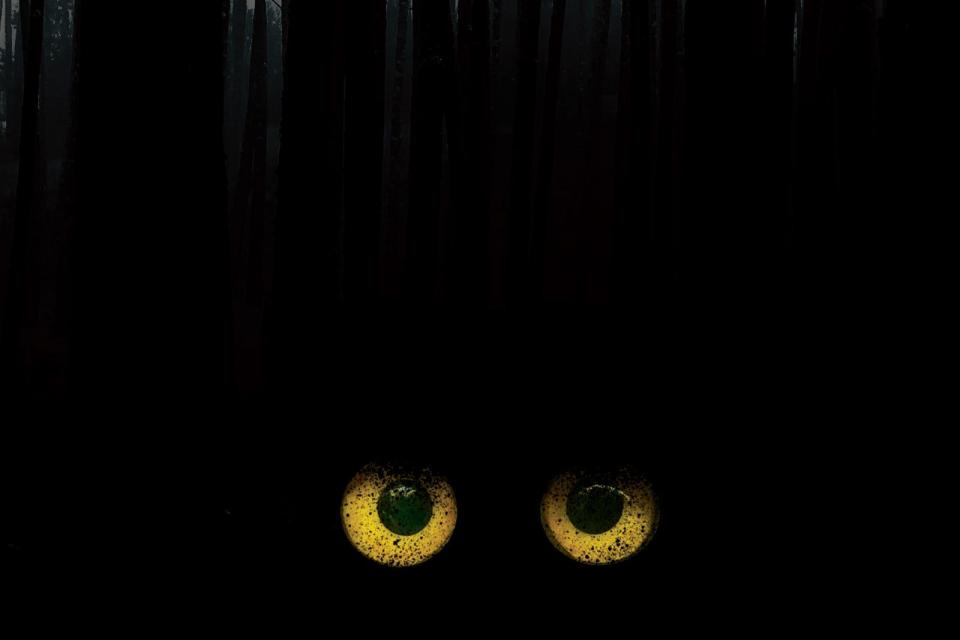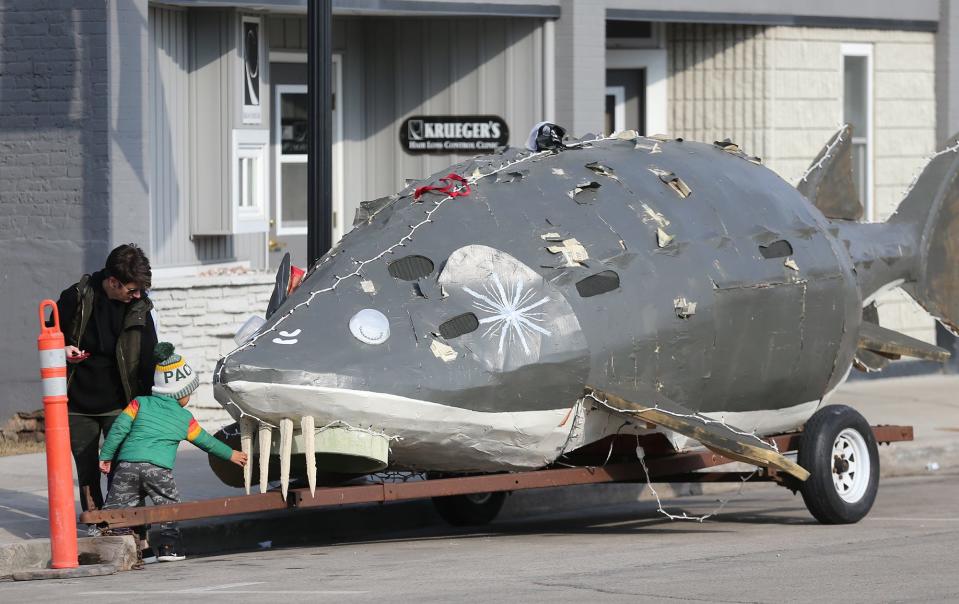From the hodag to Pepie the Lake Monster, Wisconsin cryptid legends abound

It's Halloween season, time for all the ghosts and ghouls to come out and have their fun.
And while the eeriness of the paranormal will always have an allure for many people, some of us prefer our creepiness to be grounded more in the natural world. For us, Halloween is the season of the cryptids.
Like ghosts and spirits, cryptids are delightfully mysterious. A cryptid is, according to the Merriam-Webster dictionary, "an animal (such as Sasquatch or the Loch Ness Monster) that has been claimed to exist but never proven to exist."
It's the doubt that gets us. You might not really believe that Bigfoot is out there. But isn't there, in the ancient and primitive corner of your brain, an image of a hairy, hulking creature lurking in the wilderness? And doesn't that speck of apprehension cause you to turn around when you hear the mysterious ruffling of leaves when you are out on a hike?
Cryptids and other forms of the paranormal fascinate Todd Roll, the library director at the University of Wisconsin-Platteville. He's studied the phenomena for years and interviewed people who say they have seen various incarnations of animals such as a wolf/bear hybrid and other creatures.
"I believe people believe in cryptids. I've spoke to people who think they legitimately saw something they can't explain," Roll said. "Sometimes you can even see the fear in them when they are telling the story."
There are lot of theories as to why cryptids are part of peoples' lore across the planet, Roll said. Stories about lurking monsters have been used to keep children away from dangerous places such as deep woods and water. Maybe it comes from a person's mind, filling in gaps with something seen for a moment. Maybe it comes from the human notion of using a narrative for entertainment.
"It's been true since the beginning of time," Roll said. "There's always this guy who likes telling a story for the sake of telling a story."
The cryptids of Wisconsin back up all of those notions.
The story of the hodag
If ever there was someone who liked telling a story for the sake of telling a story, it was Eugene Shepard, the Rhinelander timber man who elevated his version of the hodag into a Wisconsin legend.
Shepard was a timber cruiser, which meant he spent a lot of time in the deep woods calculating the value of the timber found on tracts of land. As such, he spent a lot of time in lumber camps where nighttime entertainment often included telling tall tales.
Shepard likely honed his idea of the hodag, a mythical beast with a dragon's body and large fangs and horns, in those camps. As Wisconsin's lumber era waned, Shepard started writing about the hodag in a local newspaper. And when Oneida County held its first fair, he, his friends and his son created a hodag sideshow that was so eerie that some fairgoers were convinced it was real.
Today the hodag is used as a mascot for the city of Rhinelander and its local high school. In 2022 the hodag was crowned the "best high school mascot in America" by an online poll.

Does Bigfoot prowl the woods of Wisconsin?
People have claimed to see Bigfoot across the state. The Animal Planet television show "Finding Bigfoot" visited central Wisconsin in 2016 to collect many of those stories. The show went on to feature two Wisconsin Rapids-area sisters, Addalynn and Alaina Kawleski, who talked about spotting the "glowing yellow eyes" of a creature in the woods behind their home.
It makes sense that Wisconsin, with large swaths of woods and open fields, would be rife with Bigfoot sightings.
Bill Rebane, a film producer from the small Lincoln County town of Gleason, created one of the dozens of movies made about the creature, called "The Capture of Bigfoot," released in 1979.
But Wisconsin doesn't have Bigfoot to itself. The Pacific Northwest has been a Bigfoot hotspot, and most recently, a potential sighting made headlines in Colorado.
And of course, the creature also has been spotted across the planet. It's known as Yeti to people of the Himalayas and as Yowie in Australia.

Monsters in Lake Winnebago and Pepin
The world's most famous lake monster is in Scotland's Loch Ness.
But Wisconsin has its share of mysterious lake-dwellers. Consider the water monster of Lake Winnebago, which dined on elk and deer, according to "Blue Men and River Monsters: Folklore of the North" by John Zimm. Legend has it that Native Americans would avoid crossing the lake for fear they would be gobbled up, too.
The tale makes sense because Lake Winnebago is home to the creepy-cool lake sturgeon, fish that could easily be mistaken for a monster at any time.
There are similar water creature tales across the state. Monsters akin to Scotland's Nessie supposedly have been seen plying the water of Lake Pepin, on Wisconsin's western border. People have been spotting the creature there for hundreds of years, according to according to the website Cryptid Wiki.
Dubbed Pepie, the periodic sightings led one Pepin-area businessman to offer a $50,000 reward for conclusive proof the creature exists. He didn't have to pay out.
The reward spurred Wisconsin paranormal investigator Chad Lewis to search for the monster. He didn't find it, but he was inspired to write a book, "Pepie the Lake Monster of the Mississippi River."
The Beast of Bray Road is legit creepy
The legend of the beast of Bray Road has been part of Walworth County lore since the 1930s. Several people have claimed to have spotted the beast, a large wolf-like creature that some say has human qualities. Some stories have the creature walking on all fours, akin to a wolf. Others claim it walks upright, like a man.
One woman said she hit something with her car, and when she went to check on it, a creature with gleaming eyes chased her back to her vehicle. Accounts have the beast scratching up cars; others blame it on the mutilation of other animals.
The stories inspired a local woman, Linda Godfrey, to embark on an investigation of her own. She never found a beast, but her investigation resulted in a book, "The Beast of Bray Road: Tailing Wisconsin’s Werewolf." Godfrey died in 2022, and according to her obituary, the story led to a career in cryptozoology and investigation that resulted in 20 some books.
The legend also inspired a 2005 horror movie titled "The Beast of Bray Road."
Halloween: Wisconsin has some of the 'most haunted' roads in America. Here's where to find them.
The bizarre phantom chickens of Seymour
Supposedly there are ghostly chickens haunting the corner of Chicken Alley and Shady Road near Seymour. The story goes like this: People driving through the intersection report that chickens appear but then mysteriously disappear just before the car hits them.
"Admittedly, this legend doesn't come with a slew of eyewitnesses, nor are ghost hunters lined up to conduct overnight investigations at the corner of Chicken Alley and Shady Road, nor are there solid origin details," Dan Higgins wrote in a story for the Green Bay Press-Gazette in 2017.
The legend includes a disembodied voice yelling at people to get out of the intersection if they linger on the roads.
Unlike other Wisconsin cryptids, the phantom chickens haven't really endured through the passing of time. But they have inspired a tongue-in-cheek post on a Geocaching website that includes a picture of Casper the Ghost in the middle of the crossroads. "If you look closely in this actual, unretouched photograph, you can faintly make out what appears to be a ghost in the photo," the author of the post wrote.
Contact Keith Uhlig at 715-845-0651 or kuhlig@gannett.com. Follow him at @UhligK on X, formerly Twitter, and Instagram or on Facebook.
This article originally appeared on Green Bay Press-Gazette: Wisconsin cryptids include the hodag, Pepie and phantom chickens

